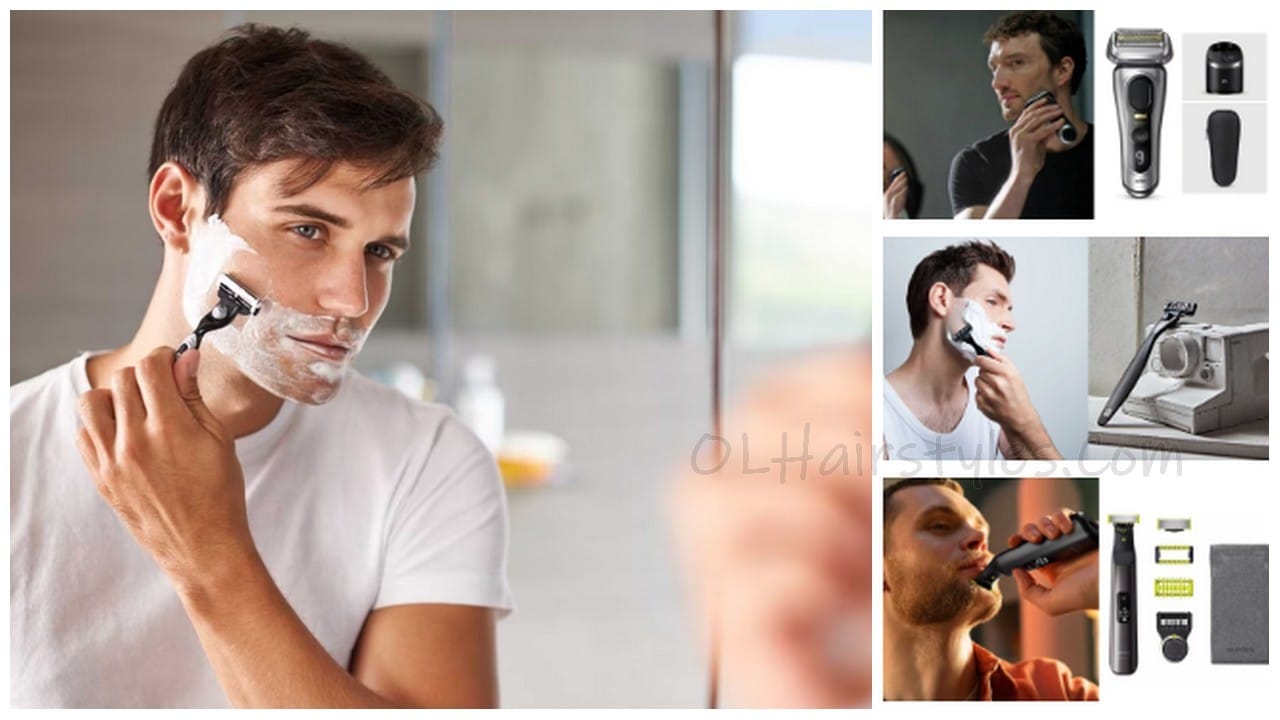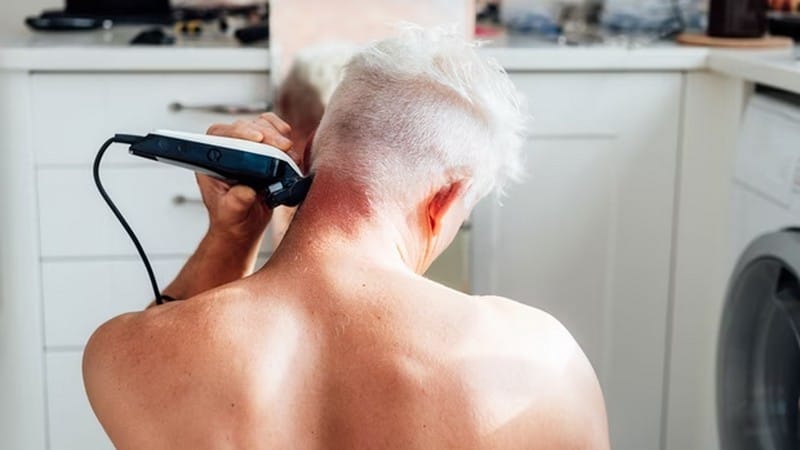Find out here what arguments speak for dry shaving and what you should consider if you have decided on the dry option
Dry shaving is good for those who like it quick and convenient: apply pre-shave, turn on the razor, and off you go. The risk of cutting yourself is also low. However, with this type of shaving, the hair is only clipped to the surface of the skin. So you can see it faster.
While the hair is cut off during wet shaving, the shaving heads of the dry shaver shave it off and remove a few thousandths of a millimeter of the stratum corneum of the skin. Shaved skin and hair pimples can then settle as horny dust in the pores and clog them.
To prevent this, you should apply a pre-shave beforehand. It straightens beard hair and contains antiseptic ingredients that protect against inflammation. After shaving, you should also put on an aftershave.
When is it better to dry?
Dry shaving may be more beneficial for acne and infectious skin. Because injuries are avoided. Disinfect the shaving heads occasionally and use care formulas prescribed by the dermatologist.
With electricity: on the dry route
Or should you shave dry? Here’s who it’s better for and how you can get a smooth chin even with electrics
Dry shaving is good for those who like it quick and convenient: apply pre-shave, turn on the razor, and off you go. The risk of cutting yourself is also low. However, with this type of shaving, the hair is only clipped to the surface of the skin. So you can see it faster.
While the hair is cut off during wet shaving, the shaving heads of the dry shaver shave it off and remove a few thousandths of a millimeter of the stratum corneum of the skin. Shaved skin and hair pimples can then settle as horny dust in the pores and clog them.

To prevent this, you should apply a pre-shave beforehand. It straightens beard hair and contains antiseptic ingredients that protect against inflammation. After shaving, you should also put on an aftershave.
When is it better to dry?
“If you have acne and infectious skin,” says Bernnecke, “dry shaving can be more beneficial. Because injuries are avoided. Disinfect the shaving heads occasionally and use care formulas that the dermatologist prescribes.”
Razor care: The most important tips for machine freaks
The skin is cared for, but the razor is often neglected. Here are the most important tips for dry shavers:
How do you properly clean a dry razor?
Don’t worry, it’s not that complicated at all. No matter how many swinging “heads” the thing has, the process is always the same with foil shavers: take down the foil, blow it out, or tap it out. Clean the shaving head yourself with the original brush; its bristles are precisely tailored to the razor.
If this is lost in your bathroom, you can get a new one from specialist retailers for around two euros. It’s even easier with a special cleaning spray (around five euros), so the dirt comes off almost by itself. You can clean the rotating and removable knife block inside in the same way. Don’t forget to unplug the power plug beforehand!
How often do you have to disinfect the shaving head area?
Jürgen Höser from the manufacturer Braun recommends it approximately every six weeks. But please, not with hard liquor. Better: A mild special solution (you can get it for around three euros in the razor department or specialist shops).

So that everything runs smoothly the next time you shave, be sure to re-grease afterward. To do this, spread a drop of sewing machine oil on the shaving blade with your finger. Don’t forget medium- and long-hair trimmers.
And a device with rotating shaving heads?
There is no need to rotate either; these can be easily removed. You can even rinse them underwater. Then you also have access to the beard hair collection container and can empty it. “Every Philips can be easily disinfected with the Action Cleaner; you should do this approximately every three weeks,” explains Petra Alisch from Philips. The shaving head is placed on the device, and the disinfectant solution is pumped through—and that’s it.
When do you have to change the blade?
Well, at the latest, when shaving gets under your skin! No, seriously, you shouldn’t wait until you injure yourself with a broken blade. When a new cutting part is due, it depends on the user. On average, it is recommended to replace the foil and knife block together after 18 months at the latest.

Leave a Reply